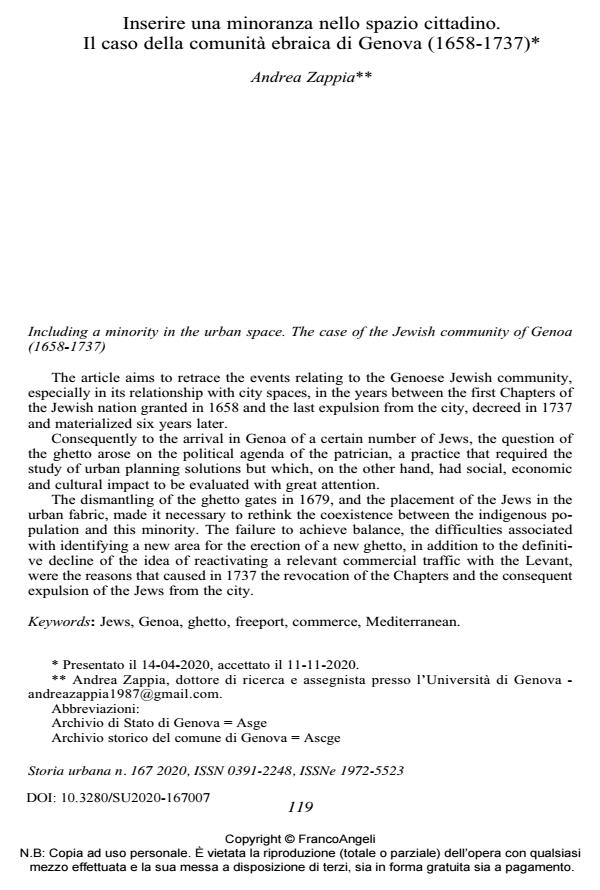Including a minority in the urban space. The case of the Jewish community of Genoa (1658-1737)
Journal title STORIA URBANA
Author/s Andrea Zappia
Publishing Year 2021 Issue 2020/167
Language Italian Pages 27 P. 119-145 File size 279 KB
DOI 10.3280/SU2020-167007
DOI is like a bar code for intellectual property: to have more infomation
click here
Below, you can see the article first page
If you want to buy this article in PDF format, you can do it, following the instructions to buy download credits

FrancoAngeli is member of Publishers International Linking Association, Inc (PILA), a not-for-profit association which run the CrossRef service enabling links to and from online scholarly content.
The article aims to retrace the events relating to the Genoese Jewish community, especially in its relationship with city spaces, in the years between the first Chapters of the Jewish nation granted in 1658 and the last expulsion from the city, decreed in 1737 and materialized six years later. Consequently to the arrival in Genoa of a certain number of Jews, the question of the ghetto arose on the political agenda of the patrician, a practice that required the study of urban planning solutions but which, on the other hand, had social, economic and cultural impact to be evaluated with great attention. The dismantling of the ghetto gates in 1679, and the placement of the Jews in the urban fabric, made it necessary to rethink the coexistence between the indigenous population and this minority. The failure to achieve balance, the difficulties associated with identifying a new area for the erection of a new ghetto, in addition to the definitive decline of the idea of reactivating a relevant commercial traffic with the Levant, were the reasons that caused in 1737 the revocation of the Chapters and the consequent expulsion of the Jews from the city.
Keywords: Jews, Genoa, ghetto, freeport, commerce, Mediterranean.
- «Han quasi ridotto tutto il negocio e mercantia in man loro»: la minoranza dei fiamenghi a Genova tra il XVI e il XVII secolo Sofia Gullino, in SOCIETÀ E STORIA 187/2025 pp.34
DOI: 10.3280/SS2025-187003
Andrea Zappia, Inserire una minoranza nello spazio cittadino. Il caso della comunità ebraica di Genova (1658-1737) in "STORIA URBANA " 167/2020, pp 119-145, DOI: 10.3280/SU2020-167007